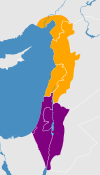
Arabic is a Central Semitic language of the Afroasiatic language family spoken primarily in the Arab world. The ISO assigns language codes to 32 varieties of Arabic, including its standard form of Literary Arabic, known as Modern Standard Arabic, which is derived from Classical Arabic. This distinction exists primarily among Western linguists; Arabic speakers themselves generally do not distinguish between Modern Standard Arabic and Classical Arabic, but rather refer to both as al-ʿarabiyyatu l-fuṣḥā or simply al-fuṣḥā (اَلْفُصْحَىٰ).
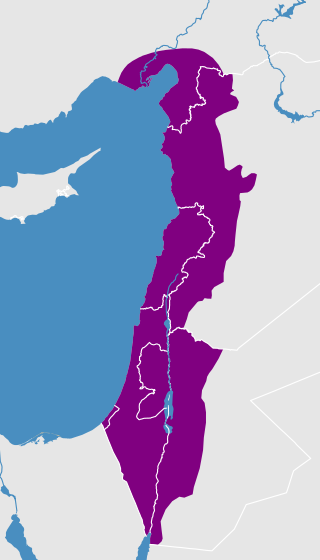
Levantine Arabic, also called Shami, is an Arabic variety spoken in the Levant, namely in Syria, Jordan, Lebanon, Palestine, Israel and southern Turkey. With over 54 million speakers, Levantine is, alongside Egyptian, one of the two prestige varieties of spoken Arabic comprehensible all over the Arab world.

Gulf Arabic is a variety of the Arabic language spoken in Eastern Arabia around the coasts of the Persian Gulf in Kuwait, Bahrain, Qatar, the United Arab Emirates, southern Iraq, eastern Saudi Arabia, northern Oman, and by some Iranian Arabs.

Algerian Arabic, natively known as Dziria, Darja or Derja, is a dialectal variety of Arabic spoken in Algeria. It belongs to the Maghrebi Arabic dialect continuum and is mostly intelligible with the Tunisian and Moroccan dialects.

Hejazi Arabic or Hijazi Arabic (HA), also known as West Arabian Arabic, is a variety of Arabic spoken in the Hejaz region in Saudi Arabia. Strictly speaking, there are two main groups of dialects spoken in the Hejaz region, one by the urban population, originally spoken mainly in the cities of Jeddah, Mecca, Medina and partially in Ta'if and another dialect by the urbanized rural and bedouin populations. However, the term most often applies to the urban variety which is discussed in this article.

Arabic is the official language of Syria and is the most widely spoken language in the country. Several modern Arabic dialects are used in everyday life, most notably Levantine in the west and Mesopotamian in the northeast.
Kuwaiti is a Gulf Arabic dialect spoken in Kuwait. Kuwaiti Arabic shares many phonetic features unique to Gulf dialects spoken in the Arabian Peninsula. Due to Kuwait's soap opera industry, knowledge of Kuwaiti Arabic has spread throughout the Arabic-speaking world and become recognizable even to people in countries such as Tunisia and Jordan.
Northwest Arabian Arabic is a proposed subfamily of Arabic encompassing the traditional Bedouin dialects of the Sinai Peninsula, the Negev, Gaza Strip, southern Jordan, and the northwestern corner of Saudi Arabia.
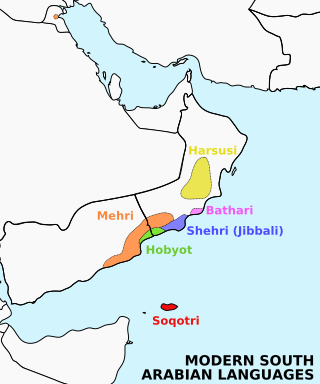
Shehri, also known as Jibbali, is a Modern South Arabian language; it and the three island varieties of Soqoṭri comprise the eastern branch of Modern South Arabian. It is spoken by a small native population inhabiting the coastal towns and the mountains and wilderness areas upland from Salalah, located in the Dhofar Governorate in southwestern Oman. The autonym for speakers is əḥklí, plural əḥkló.
Bedouin Arabic refers to a typological group of Arabic dialects historically linked to Bedouin tribes, that has spread among both nomadic and sedentary groups across the Arab World. The group of dialects originate from Arabian tribes in Najd and the Hejaz that have spread since the 10th century until modern day. Bedouin dialects vary by region and tribe, but they typically share a set of features which distinguish them from sedentary-type dialects in each region.
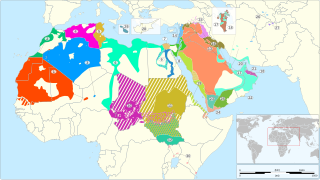
Varieties of Arabic are the linguistic systems that Arabic speakers speak natively. Arabic is a Semitic language within the Afroasiatic family that originated in the Arabian Peninsula. There are considerable variations from region to region, with degrees of mutual intelligibility that are often related to geographical distance and some that are mutually unintelligible. Many aspects of the variability attested to in these modern variants can be found in the ancient Arabic dialects in the peninsula. Likewise, many of the features that characterize the various modern variants can be attributed to the original settler dialects as well as local native languages and dialects. Some organizations, such as SIL International, consider these approximately 30 different varieties to be separate languages, while others, such as the Library of Congress, consider them all to be dialects of Arabic.
Western Egyptian Bedawi Arabic, also known as Sahil Maryut Bedouin Arabic, is a group of Bedouin Arabic dialects spoken in Western Egypt along the Mediterranean coast, west to the Egypt–Libya border. Ethnologue and Glottolog classify Western Egyptian Bedawi Arabic as a Libyan Arabic dialect.
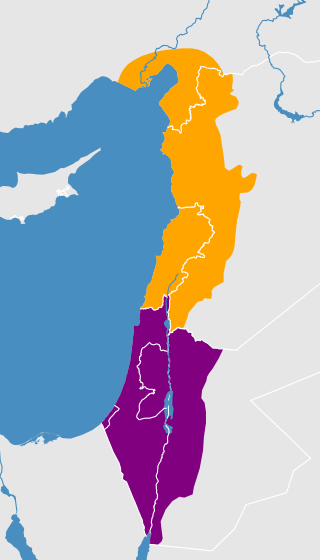
Palestinian Arabic is a dialect continuum of mutually intelligible varieties of Levantine Arabic spoken by most Palestinians in Palestine, Israel and in the Palestinian diaspora.
Syrian Arabic refers to any of the Arabic varieties spoken in Syria, or specifically to Levantine Arabic.
The grammar, the conjugation and the morphologyof Tunisian Arabic is very similar to that of other Maghrebi Arabic varieties. It is based on Classical Arabic and influenced by Berber languages and Latin, with some morphological inventions. The Berber influence is more noticeable in Pre-Hilalian dialects.
This article is about the phonology of Levantine Arabic also known as Shāmi Arabic, and its sub-dialects.
Pre-classical Arabic is the cover term for all varieties of Arabic spoken in the Arabian Peninsula until immediately after the Arab conquests and emergence of Classical Arabic in the 7th century C.E. Scholars disagree about the status of these varieties.

Damascus Arabic or Damascus Dialect is a North Levantine Arabic spoken dialect, indigenous to and spoken primarily in Damascus. As the dialect of the capital city of Syria, and due to its use in the Syrian broadcast media, it is prestigious and widely recognized by speakers of other Syrian dialects, as well as in Lebanon, Palestine, and Jordan. Accordingly, in modern times it is sometimes known as Syrian Arabic or the Syrian Dialect; however, the former term may also be used to refer to the group of similar urban sedentary dialects of the Levant, or to mean Levantine Arabic in general.
Levantine Arabic grammar is the set of rules by which Levantine Arabic creates statements, questions and commands. In many respects, it is quite similar to that of the other vernacular Arabic varieties.
Levantine Arabic vocabulary is the vocabulary of Levantine Arabic, the variety of Arabic spoken in the Levant.











